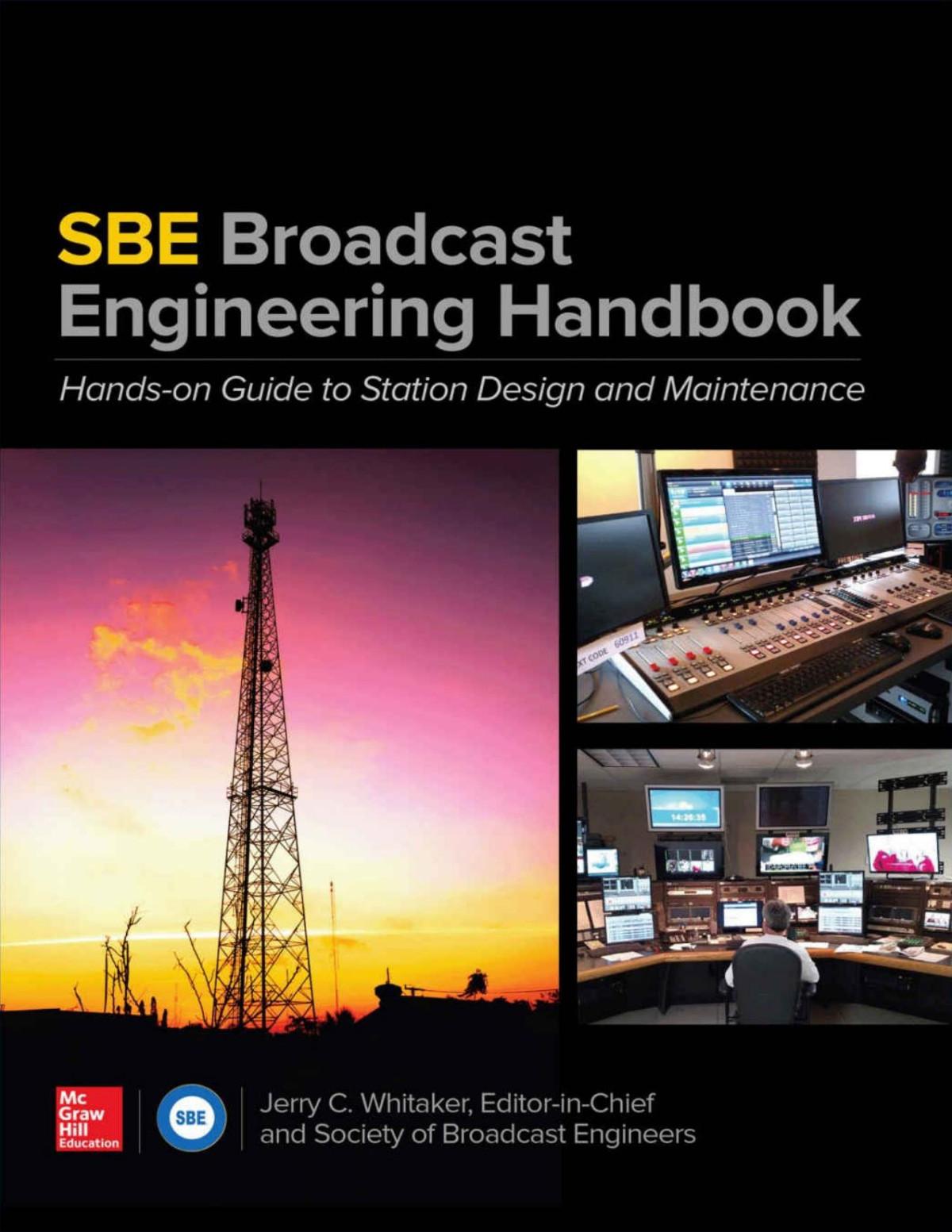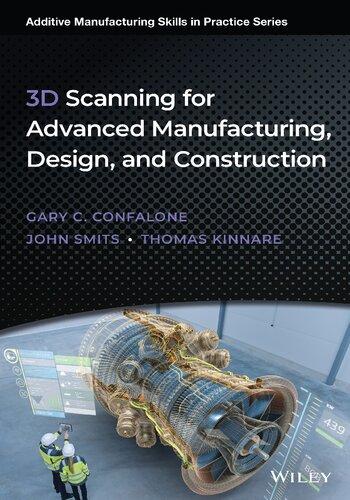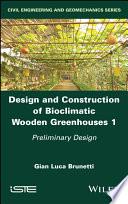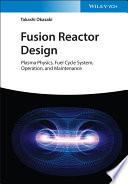Fields: Design, Construction, and Maintenance 3rd Edition
Visit to download the full and correct content document: https://ebookmass.com/product/sports-fields-design-construction-and-maintenance-3r d-edition-james-c-puhalla/
More products digital (pdf, epub, mobi) instant download maybe you interests ...
Innovative Bridge Design Handbook: Construction, Rehabilitation and Maintenance, 2nd Edition Alessio Pipinato
https://ebookmass.com/product/innovative-bridge-design-handbookconstruction-rehabilitation-and-maintenance-2nd-edition-alessiopipinato/
The SBE Broadcast Engineering Handbook: A Hands-on Guide to Station Design and Maintenance Jerry C. Whitaker
https://ebookmass.com/product/the-sbe-broadcast-engineeringhandbook-a-hands-on-guide-to-station-design-and-maintenancejerry-c-whitaker/
Electrical submersible pumps manual: design, operations, and maintenance Second Edition Takács
https://ebookmass.com/product/electrical-submersible-pumpsmanual-design-operations-and-maintenance-second-edition-takacs/
3D Scanning for Advanced Manufacturing, Design, and Construction: Metrology for Advanced Manufacturing Gary C. Confalone
https://ebookmass.com/product/3d-scanning-for-advancedmanufacturing-design-and-construction-metrology-for-advancedmanufacturing-gary-c-confalone/
Design and Construction of Bioclimatic Wooden Greenhouses, Volume 1: Preliminary Design 1st Edition
Gian Luca Brunetti
https://ebookmass.com/product/design-and-construction-ofbioclimatic-wooden-greenhouses-volume-1-preliminary-design-1stedition-gian-luca-brunetti/
(The Rockers Of Steel 03) River James Mj Fields
https://ebookmass.com/product/the-rockers-of-steel-03-riverjames-mj-fields/
Landscape Construction 3rd Edition, (Ebook PDF)
https://ebookmass.com/product/landscape-construction-3rd-editionebook-pdf/
Handbook for Building Construction: Administration, Materials, Design, and Safety Clifford J Schexnayder
https://ebookmass.com/product/handbook-for-building-constructionadministration-materials-design-and-safety-clifford-jschexnayder/
Fusion Reactor Design: Plasma Physics, Fuel Cycle System, Operation and Maintenance 1st Edition Takashi Okazaki
https://ebookmass.com/product/fusion-reactor-design-plasmaphysics-fuel-cycle-system-operation-and-maintenance-1st-editiontakashi-okazaki/
SportsFields JamesC.Puhalla
SportsFieldConsultantBoardman,OH,US
JeffreyV.Krans
MississippiStateUniversity–RetiredMeridian,MS,US
J.MichaelGoatley,Jr. VirginiaTechBlacksburg,VA,US
Thiseditionfirstpublished2020
©2020JohnWiley&Sons,Inc.
EditionHistory
JohnWiley&Sons,Inc.(1e,2006);JohnWiley&Sons,Inc.(2e,2010)
Allrightsreserved.Nopartofthispublicationmaybereproduced,storedinaretrievalsystem,ortransmitted,in anyformorbyanymeans,electronic,mechanical,photocopying,recordingorotherwise,exceptaspermittedby law.Adviceonhowtoobtainpermissiontoreusematerialfromthistitleisavailableat http://www.wiley.com/ go/permissions
TherightofJamesC.Puhalla,JeffreyV.KransandJ.MichaelGoatley,Jr.tobeidentifiedastheauthorsofthis workhasbeenassertedinaccordancewithlaw.
RegisteredOffice
JohnWiley&Sons,Inc.,111RiverStreet,Hoboken,NJ07030,USA
EditorialOffice
111RiverStreet,Hoboken,NJ07030,USA
Fordetailsofourglobaleditorialoffices,customerservices,andmoreinformationaboutWileyproductsvisitus at www.wiley.com
Wileyalsopublishesitsbooksinavarietyofelectronicformatsandbyprint-on-demand.Somecontentthat appearsinstandardprintversionsofthisbookmaynotbeavailableinotherformats.
LimitofLiability/DisclaimerofWarranty
Inviewofongoingresearch,equipmentmodifications,changesingovernmentalregulations,andtheconstant flowofinformationrelatingtotheuseofexperimentalreagents,equipment,anddevices,thereaderisurgedto reviewandevaluatetheinformationprovidedinthepackageinsertorinstructionsforeachchemical,pieceof equipment,reagent,ordevicefor,amongotherthings,anychangesintheinstructionsorindicationofusageand foraddedwarningsandprecautions.Whilethepublisherandauthorshaveusedtheirbesteffortsinpreparing thiswork,theymakenorepresentationsorwarrantieswithrespecttotheaccuracyorcompletenessofthe contentsofthisworkandspecificallydisclaimallwarranties,includingwithoutlimitationanyimpliedwarranties ofmerchantabilityorfitnessforaparticularpurpose.Nowarrantymaybecreatedorextendedbysales representatives,writtensalesmaterialsorpromotionalstatementsforthiswork.Thefactthatanorganization, website,orproductisreferredtointhisworkasacitationand/orpotentialsourceoffurtherinformationdoes notmeanthatthepublisherandauthorsendorsetheinformationorservicestheorganization,website,or productmayprovideorrecommendationsitmaymake.Thisworkissoldwiththeunderstandingthatthe publisherisnotengagedinrenderingprofessionalservices.Theadviceandstrategiescontainedhereinmaynot besuitableforyoursituation.Youshouldconsultwithaspecialistwhereappropriate.Further,readersshouldbe awarethatwebsiteslistedinthisworkmayhavechangedordisappearedbetweenwhenthisworkwaswrittenand whenitisread.Neitherthepublishernorauthorsshallbeliableforanylossofprofitoranyothercommercial damages,includingbutnotlimitedtospecial,incidental,consequential,orotherdamages.
LibraryofCongressCataloging-in-PublicationData
Names:Puhalla,Jim,author.|Krans,Jeff,author.|Goatley,Mike, author.
Title:Sportsfields:design,construction,andmaintenance/JamesC. Puhalla,JeffreyV.Krans,J.MichaelGoatley.
Description:Thirdedition.|Hoboken,NJ:Wiley,2020.|Includesindex.
Identifiers:LCCN2019057871(print)|LCCN2019057872(ebook)|ISBN 9781119534754(hardback)|ISBN9781119534723(adobepdf)|ISBN 9781119534747(epub)
Subjects:LCSH:Athleticfields—UnitedStates—Designandconstruction.| Athleticfields—UnitedStates—Maintenanceandrepair.|Sports facilities—UnitedStates—Designandconstruction.|Sports facilities—UnitedStates—Maintenanceandrepair.|Turf management—UnitedStates.
Classification:LCCGV413.P852020(print)|LCCGV413(ebook)|DDC 796.4206/8—dc23
LCrecordavailableathttps://lccn.loc.gov/2019057871
LCebookrecordavailableathttps://lccn.loc.gov/2019057872
CoverDesign:Wiley
CoverImages:CourtesyofJamesC.Puhalla, background©magann/GettyImages
Setin10/12ptandGalliardStdbySPiGlobal,Chennai,India 10987654321
AbouttheAuthorsxi AbouttheSTMAxiii Prefacexv
Part 1 PrinciplesofSportsTurfCulture1 1Turfgrasses3
1.1Introduction3
1.2BiologyandIdentification4
1.3TurfgrassTypes11
1.4TurfgrassSelection18
1.5UsingtheTwo-MapSystemtoSelectTurfgrass20
1.6PlantingTimesandRates24
1.7SoilPreparation27
1.8PlantingTechniques28
1.9Establishment35
1.10OverseedingWarm-SeasonFields38
1.11SustainingaMixedWarmandCoolSeasonTurfgrass CanopyintheTransitionZone45
2SoilsandSoilScience53
2.1Introduction53
2.2SoilasaMediumforTurfgrass53
3FertilityandFertilizers67
3.1Introduction67
3.2NutrientRequirements67
3.3NutrientUptake70
3.4SoilReaction71
3.5FertilizerAnalysis73
3.6FertilizerSources74
3.7ApplicationRatesandFrequencies78
3.8Micronutrients82
3.9Biostimulants84
4Mowing87
4.1Introduction87
4.2TypesofMowers90
4.3TurfResponse92
4.4HeightandFrequency93
4.5Pattern94
4.6ClippingRemoval95
4.7EquipmentandSafety96
4.8ChemicalGrowthRegulators97
5Irrigation103 5.1Introduction103
5.2IrrigationandTurfgrassCulture103
5.3GeneralPrinciplesofTurfgrassIrrigation104
5.4PortableIrrigationSystems105
5.5InstalledIrrigationSystems106
5.6WirelessSensorTechnology121
5.7SubsurfaceDripIrrigation(SDI)121
5.8TheUseofNonpotableWaterforSportsField Irrigation122
5.9KnowYourWaterSource123
6Drainage125 6.1Introduction125
6.2SurfaceDrainage125
6.3InternalDrainage129
6.4InstalledDrainSystems136
6.5OtherDrainSystemPractices147
7AerationandTopdressing149
7.1Introduction149
7.2AeratingforOptimalTurfResponses149
7.3AerationEquipment153
7.4Topdressing163
8Thatch167
8.1Introduction167
8.2DefinitionofThatch167
8.3AdvantagesandDisadvantagesofThatchinSports Turf168
8.4HowThatchDevelops170
8.5MaintainingaManagedThatchLayer172
8.6ReducingExcessiveThatchBuildup173
9TurfgrassStressesandRemedies179
9.1Introduction179
9.2MechanicalStresses179
9.3EnvironmentalStresses183
9.4Weeds,Insects,andDiseases187
10WiseUseofChemicals271
10.1Introduction271
10.2TheLabelIstheLaw271
10.3PlanningandPerformingApplications275
10.4RecordKeeping286
11OrganicFieldManagement289
11.1Introduction289
11.2DefinitionsandPrinciplesofOrganicField Management290
11.3PrinciplesandConceptsofOrganicField Management290
11.4MakinganAdjustmenttoOrganicField Management292
11.5TimingandSiteConditionsforOrganicField Management292
11.6OrganicFieldManagementInputs293
11.7CompostandComposting308
11.8CompostApplicationsonSportsFields311
Part 2 NaturalTurfgrassSportsFields313
12BaseballandSoftballFields317
12.1Introduction317
12.2Design317
12.3Construction340
12.4Renovation349
12.5MaintenanceandManagementProcedures353
12.6RulesandRegulations357
13FootballFields371
13.1Introduction371
13.2Design372
13.3Construction381
13.4Renovation383
13.5MaintenanceandManagementProcedures387
13.6RulesandRegulations396
14Soccer,Lacrosse,andFieldHockeyFields405
14.1Introduction405
14.2Design406
14.3Construction412
14.4Renovation412
14.5MaintenanceandManagementProcedures415
14.6RulesandRegulations421
Part 3 OtherSportsSurfaces431 15TennisCourts433
15.1Introduction433
15.2Design434
15.3Construction439
15.4Renovation440
15.5Maintenance442
15.6RulesandRegulations444
16TrackandFieldFacilities447
16.1Introduction447
16.2Design448
16.3TrackConstruction455
16.4TrackRenovation456
16.5TrackMaintenance456
16.6RulesandRegulations457
17SyntheticTurf461
17.1Introduction461
17.2HistoryandInnovations462
17.3ChoosingtheRightManufacturerand Installer464
17.4CareandMaintenance465
Part 4 AncillaryInformation475 18SurveyingtheGrade477
18.1Introduction477
18.2SurveyingEquipment478
18.3EstablishingElevations481
19Sand-BasedRootzones485
19.1Introduction485
19.2ConsiderationsWhenSelectingaSand-Based Rootzone487
19.3Sand-BasedRootzoneRequirements490
19.4Maintenance499
20PaintsandCovers507
20.1Introduction507
20.2Paints508
20.3Covers515
21FieldEvaluationandTurfgrassAssessment521
21.1Introduction521
21.2ComponentsofFieldQuality521
21.3AestheticAppealandQuality522
21.4BallandPlayerResponseasAffectedbySurface Characteristics523
21.5TestingEquipmenttoEvaluatethePlaying Surface524
22Safety531 22.1Introduction531
22.2PlayerSafetyandPerformance531
22.3SpectatorSafety532
22.4DesigningforSafety534
22.5SafetyConcernsDuringConstructionand Renovation535
22.6MaintainingaSafeFacility535
23EnvironmentalStewardship,ResourceConservation,and Sustainability539
23.1Introduction539
23.2EnvironmentalStewardship540
Contents
23.3ResourceConservation541
23.4Sustainability549
24InnovationsDesignedtoPromoteNaturalGrassFields555
24.1Introduction555
24.2Lighting555
24.3EnhancedTurfgrassPerformance556
24.4InstantFieldReplacement558
24.5WirelessTechnology,RemoteSensing,andPredictive Models562
25PublicRelationsandProfessionalism565
25.1Introduction565
25.2PublicRelations565
25.3Professionalism570
Appendix573 Glossary585 Index597
AbouttheAuthors JimPuhalla ofBoardman,Ohio,isaSportsFieldConsultantwhoprovidesdesign, consulting,andconstructionsupervision.Hisknowledgeofsportsfieldmanagement camethroughhands-onexperiencesasalandscapeandsportsfielddesign/buildcontractor.Heownedandoperatedacompanythatspecializedinsportsfielddesign, construction,andmaintenancefrom1990through2012,andalandscapecompany from1977through2003.Althoughheretiredfromsportsfieldconstructionand maintenancein2013,hestillenjoyssharinghisexperienceswithotherswhohave similargoalsincreatingsafe,moreuseablesportsfacilities.
JeffKrans isaformerProfessorofAgronomyatMississippiStateUniversityinthe GolfandSportsTurfManagementprogram.HereceivedhisPhDfromMichigan StateUniversityin1975,anMSdegreefromtheUniversityofArizonain1973,and hisBSdegreefromtheUniversityofWisconsin–StevensPointin1970.Jefftaughtand advisedstudentsintheGolfandSportsTurfManagementprogram,andconducted researchinturfgrassbreedingandphysiologyfrom1975to2002.Jeffremainsanavid supporterofhigh-qualitynaturalturfforsafesportsforparticipantsandspectators.
MikeGoatley isProfessorandExtensionTurfgrassSpecialistintheSchoolofPlant andEnvironmentalSciencesatVirginiaTech.MikereceivedhisPhDfromVirginia Techin1988,hisMSdegreefromtheUniversityofKentuckyin1986,andhisBS degreefromtheUniversityofKentuckyin1983.Hetaughtandadvisedstudentsinthe GolfandSportsTurfManagementprogramatMississippiStatefrom1988to2003 beforemovingtoVirginiaTech.MikeservesastheoutreachcoordinatorforagronomicturfsciencesinVirginia,andhisresearchinterestsfocusonturfselectionand managementstrategiesthatpromoteenvironmentalstewardship.HeservedaspresidentofSTMAin2012and2013andreceivedSTMA’sWilliamH.DanielFounder’s Awardin2008andHarryC.GillFounder’sAwardin2016.
STMAisthenot-for-profitprofessionalassociationforthemenandwomenwhomanagesportsfields.Since1981,theassociationandits30-pluslocalchaptershavebeen providingeducation,information,andsharingpracticalknowledgeintheartandscienceofsportsfieldmanagement.Itsmorethan2,500membersoverseesportsfields andfacilitiesatschools,collegesanduniversities,parksandrecreationalfacilities,and professionalsportsstadiums.Themembership’sgoalistomanagenaturalturfandsyntheticsurfacestoproducesafeandaestheticallypleasingplayingsurfacesforathletes atalllevelsofplayingabilities.STMAalsohasthesupportofcommercialmembers thatfurtherstheindustrythroughcontinuousadvancementsintechnology.
TheSTMAMission:
Tobetherecognizedleaderinstrengtheningthesportsturfindustryandenhancing members’competenceandacknowledgementoftheirprofessionalism.
Preface Likesomanyaspectsofcontemporarylife,ourathleticandleisurepursuitsare becomingincreasinglyinfluencedbyeconomicandlogisticalfactors.Construction andmaintenancebudgetsaresqueezedevermoretightly.Theexplosioninathletic opportunitiesforgirlsandwomenhasdoubledtheuseofsomefacilities,andsent plannersscurryingofftobuildthousandsofnewones.Thepopularityofpersonal injurylawsuitshasforcedinsurancepremiumshigherandledinsurerstoinsiston greateruniformityinthedesignandconstructionofsportsfacilities.
Allofthesefactorshavetheirimpactontheconstructionandmaintenanceof sportsfields.Tighterbudgetsmeanlessmoneyforafter-the-factrepairsandgreater insistenceonbuildingitrightthefirsttime.Increasedpressureonthefacilitiesmeans thatunplayablefieldscreatetwiceasmanyreschedulingheadachesastheyusedto. Thethreatoflawsuitsdemandsgreaterattentiontothesafetyofthefacilityitself.
THEPURPOSEOFTHISBOOK Thisbookisdesignedtoprovideacomprehensivetechnicalreferencesourceforthose whoareresponsibleforthedesign,construction,renovation,ormaintenanceofsports fields.Inordertoaddresstheseissues,thechaptersthatfollowwillillustratespecific designelementsofallpopularsportsfacilitiesandexplainhowthoseelementsare integratedinasuccessfulproject;explorecommonlyencounteredsportsfieldproblemsandsuggestappropriatesolutions;andprovidepracticalguidanceforcontinuing maintenanceprograms.
Whilesoilandclimatevariationswillsometimescreateuniquelocalchallengesfor thosechargedwithbuildingormaintainingsportsfacilities,theprinciplessharedon thesepagesshouldprovideabasicplanofactionandasetofpracticaldesigncriteria usablethroughoutNorthAmericaandinsimilargeographiesthroughouttheworld.
HowtoUseThisBook Part1, PrinciplesofSportsTurfCulture,offersinformationonwhichtobase sounddecisionsregardingthenurtureandmaintenanceofsportsturf.Thisportionof thebookdealswithsuchmattersasturfgrassandsoilscience,culturalpractices,and stressesplacedonturfyear-roundandduringsportscompetition.Toachievethefullest possiblevaluefromthisvolume,it’sadvisabletobeginbyreadingthesechapters.
Part2, NaturalTurfgrassSportsFields,providesguidanceonthedesign, construction,renovation,andmaintenanceofparticulartypesofsportsfields.Each chaptercombinessimilarfacilities,basedonthedesignandconstructionstrategies andperformanceexpectationsoftheturf.Forexample,Chapter14coverssoccer, lacrosse,andfieldhockeyfields.Fielddimensionsareprovidedattheendofeach chapter.
Part3, OtherSportsSurfaces,providesguidanceonothertypesofsportsfacilitiesforwhichadesigner,contractor,orfacilitiesmanagermightberesponsible,like tenniscourts,trackandfield,andsyntheticturf.Properdesignandconstruction techniquescanbeparticularlyimportantforthesefacilities,whichmustbeeasilymaintainedinawiderangeofusageandweathercircumstances.
Part4, AncillaryInformation,coversmiscellaneousrelatedtopics,including surveying,sand-basedfields,turfpaintsandcovers,fieldevaluationandturfgrass assessment,environmentalstewardship,safety,innovationstopromotenaturalgrass fields,andpublicrelationsandprofessionalism.
The appendix attheendofthebookconsistsoftwoparts.Thefirstpartconsiders calculationsthataremostcommonlyusedbydesigners,contractors,andmaintenance personnel.ThesecondpartlooksatexamplesofhowtheSTMAhelpssportsfield managerskeepupwiththelatesttrends.
Throughoutthetext,wehaveworkedtomakethisbookasusefulaspossibleto thosewhoarechargedwithkeepingsportsfieldssafe,playable,andbeautiful,and tothosestudentswhoarepreparingforacareerinthisrewardingfield.Thesepages sharemuchofthelatestinacademicresearchanddevelopmentofthescienceofsports turf,butpresenttheselatestfindingsintheformofpracticaladvicefortherealworld. Itisourfondesthopethattheresultofthisbookwillbeanewgenerationofsafe, competitive,andeasy-to-maintainsportsfacilitiesforpeopleofallages.
ACKNOWLEDGMENTS Theauthorsgratefullyacknowledgethecontributionsofmanyacademicandprofessionalleaderswhoseadviceandcounselhavecontributedtothecompletionof thisbook.
Weareappreciativeforthedetailedadviceofthefollowingacademiccolleagues: Dr.DonaldWaddingtonofPennsylvaniaStateUniversity,AndrewMcNittofPennsylvaniaStateUniversity,andDr.ColemanWard(deceased,ProfessorEmeritus)of AuburnUniversity.InparticularweacknowledgeDr.McNittforthedevelopmentof Chapter19,“Sand-BasedRootzones.”
ThankstoDr.VictorMaddox,WaynePhilley,andDr.MariaTomaso-Peterson, allofMississippiStateUniversity,forprovidingphotographs,information,and manuscriptreviews.ThankstoVirginiaTechfacultyDr.ShawnAskew,Dr.David McCall,andDr.TomKuharformanuscriptreviewspecifictothelatestinpest managementstrategiesandtools,andthankstomanyuniversityandindustry colleaguesforprovidingmultiplephotographscitedthroughoutthisbook.Thanks toBartPratherofMississippiStateUniversity,TraDuboisofWorldClassAthletic Surfacesforadviceonpaintingathleticfields,andtotheteamatCarolinaGreenInc. fortheirassistancewithChapter17,“SyntheticTurf.”
Thanksalsotothemanysportsorganizationsandsanctioningbodiesforsharing theirspecificationsandfieldconstructioninformation,whichhavehelpedtomakethis volumecomprehensive.Theseorganizationsarelistedindividuallyattheendsoftheir respectivechapters.
1 PRINCIPLESOF SPORTS TURF CULTURE Sportsturffieldsandrelatedfacilitiesaredesignedtomeettwobasicrequirements: theymustbelargeenoughand/orthenecessaryshapetoallowtheparticularsport tobeplayedaccordingtoitsrecognizedrulesandregulations,andtheymusthavea surfacethatallowstheplayerstocompetesafelyandatareasonablelevelofcompetition.Becausemanysportsturfsurfacesarealsousedfornonsportsactivities(likeband practice),thesurfacemustbedurableenoughtowithstandthestressesassociatedwith thosenonsportsfunctions.
Asanysportsfanwillagree,playerperformancedependsinlargepartonthequalityoftheturfsurface.Butafieldsmanagermustalsokeepinmindthatsafety,aswell asperformance,isdependentonturfquality.Eachoftheseimportantconsiderations isdependentonthreeturfcharacteristics: traction,hardness,and evenness.
Traction isobviouslycriticaltogeneratingandcontrollingspeed,makingsharp changesindirection,andstopping.Inadditiontoreducingaplayer’sabilitytoavoid or(inthecaseofcontactsports)tocontrolcollisions,poortractioncanleadtomuscle pullsandavarietyofothercommoninjuries.
Hardness canallowplayerstoperformatmaximumspeed,butcanalsoaffect players’abilitytocutsharplyandincreaseinjuryfromfallsandtackles.
Evenness,alongwithhardness,isamajorfactoraffectingballresponse,which includestheheightanddirectionofbounce,aswellasthetruenessandspeedofroll. Inmanyturfsports—andperhapsinmost—predictableballresponseisnecessaryto supportthedesiredlevelofcompetition.
Justasgoodteamsarecreatedbycarefulattentiontodetail,goodturfcomes frompracticingeffectiveturfgrassculturalandmanagementstrategies.Inthefollowingchapterswewillconsidertheunderlyingprinciplesofturfgrassbiology,selection, andestablishment;soilscience,includingfertilityandfertilizers;cultivationandthatch management;organicfieldmanagement;irrigationanddrainage;pesticideuseand safety;turfgrassstresses;andevenpropermowingtechniques.
Whetherreadingsectionsofthetextasaclassassignmentorflippingitopento addressaparticularsportsturfconcern,thereaderwillfindthatouradviceisfirst toseekthehealthoftheturfanditsenfoldingculture,andalltherest(playability, economy,aesthetics)willbeaddedontoit.Managetheculturecorrectly,andpest problemswillbeminimized.
Turfgrasses 1.1INTRODUCTION Turfgrass isadesignationgiventoaverysmallgroupofgrassesthathaveaunique combinationofplantmorphology(form)andadaptationtoadefinedsetofcultural practices.Themorphologyrequisitesofaturfgrassareprostrateorcompressedstems at,near,and/orbelowthesoilsurface(tillers,stolons,and/orrhizomes),compressed leafsheathsandblades(diminutivegrowthhabit),tolerancetohighplantcompatibility(highstanddensity),androbustproductionandgrowthofbranchingstems (aknittedgrowthhabit).Incombinationwiththeserequirements,allturfgrassesmust toleratelowandfrequentshootdefoliation(withstandcloseandfrequentmowing), havehighvegetativeplasticity(aplant’sabilitytocontractorenlargeitsshootstructuredependingonmowingpressure),andcontroltheirvegetativetoreproductive transformation(seedheadformation)regardlessofmowingpressure,nitrogenlevel, irrigation,andchemicalsthatregulateplantgrowth,andthelike.
Botanistshavecataloguedover10,000speciesofgrassesworldwide.Withinthat classification,thereareprimarily12grassspeciesthatfallundertheturfgrasslabel. Outofthatnumber,only6grassspeciesarerecognizedforsportsturfapplication. Thiselitegroupofsportsturfmustpossesstheprecedingturfgrasscriteriaplusthree otherimportantfeatures.Thesportsturfspeciesmusthaveexcellenttraffictolerance,rapidrecoveryfromdivotingandinjury,andhightensileorsodstrength.In someinstances,acombinationofturfgrassspeciesareusedtoobtainallormostof thesefeatures.
Tobecomebettersportsturfmanagers,wefirstneedtofamiliarizeourselveswith turfgrassbiology,selection,andplanting.Inthischapter,wewillbeginbylookingat turfgrassgrowthanddevelopment.Thenwewillturnourattentiontotheprocedures ofchoosing,planting,andestablishingthebestsportsturfpossible.Finally,wewill
discusstheoverseedingofwarm-seasonsportsfieldsthatareusedduringthefalland wintermonths.Thisinformationwillsetafoundationthatwillhelpthefieldmanager tounderstandhowmaintenancepractices,pestcontrols,andenvironmentalstresses affectthequalityofsportsturf.
1.2BIOLOGYANDIDENTIFICATION Turfgrassbiologyisthestudyofthevitalplantprocessesnecessaryforturfgrass growthanddevelopment.Theseprocessesaredividedintothecategoriesofmorphology,anatomy,andphysiology.Turfgrassmorphologyistheoutwardformor structureoftheturfgrassplant.Turfgrassanatomyconsistsoftheinnercell,tissue, andorganstructuresthatcombinetoformthewholeplant.Turfgrassphysiology referstothemetaboliceventsandpathwaysthatformulatethelifeprocessesofthe plant.Theunderlyingabilityofgrassestosurviveandpersistasturfisduetotheir specializedmorphology,anatomy,andphysiology.
Turfgrassculturalpracticesdeterminethegrasses’abilitytoadaptasaturf.These practicesincludemowingandseasonalrenovationspractices,suchasaeration,vertical mowing,andsoon.Anunderstandingofturfgrassbiologyandturfculturalpractices allowsustopredictaturfgrassresponsetotheseculturalpractices,andtohaveabetter understandingofhowturfcanbemanagedtohelpittolerateinjurybypestsorby mechanicalorenvironmentalstresses.
Outofthe12grassescommonlyusedasturfgrasses,the6speciesusedin sportsturfsituationsarecool-seasonspeciesKentuckybluegrass(Poapratensis L.), tallfescue(Schedonorusarundinaceus (Schreb.)Dumort.,nom.cons.syn. Festuca arundinacea Schreb.),perennialryegrass(Loliumperenne L.),andcreepingbentgrass (Agrostisstolonifera L.syn. A.palustris Huds.);andwarm-seasonspeciesbermudagrass(Cynodon spp.)andseashorepaspalum(Paspalumvaginatum Sw.),asshown inTable1.1.Twootherswarm-seasonspecies,buffalograss[Boutelouadactyloides (Nutt.)J.T.Columbus,syn. Buchloedactyloides L.]andzoysiagrass(Zoysia spp.),are sometimesusedforsportsturf,butinfrequently.
Thewarm-seasonspeciesbermudagrassandseashorepaspalumareusually plantedandmaintainedalone(orasa“monostand”)exceptwhenoverseededwith perennial,annualryegrass(Loliumperenne L.ssp. multiflorum (Lam.)Husnot) orintermediateryegrass(Lolium × hybridum Hausskn.)forwinterplay.However, successisbeingachievedinsometransitionzonelocationswithaperennialtwo-grass turfwhereKentuckybluegrassisestablishedwithbermudagrass(commonlyreferred toas“bluemuda”).ThecoolseasonspeciesKentuckybluegrass,tallfescue,and perennialryegrassareplantedandmaintainedaseithermonostandsorincombinationwithoneanother(as“polystands”).Creepingbentgrassisusuallyplantedas amonostand.
Thelimiteduseofbuffalograss(Buchloedactyloides resultsfromsomeofitsspecial characteristics.Buffalograssisawarm-seasongrassusedprimarilyinaridwarm-season, transition,andcool-seasonregionsintheUnitedStates.Itslimitationispoorwear
Table1.1 Characteristicsofturfgrassescommonlyusedforsportsturf.
TurfgrassSpeciesStrengthasSportsTurfLimitationasSportsTurf
Bermudagrass (Cynodon spp.)
Kentuckybluegrass (Poapratensis L.)
Strongindeterminaterhizomes andstolons(excellentsod knitting),robustvegetative growthandrecuperativeability, excellentwearresistance,and goodsurfaceresiliency.
Tallfescue(Schedonorus arundinaceus (Schreb.) Dumort.,nom.cons. syn. Festuca arundinacea Schreb.)
Perennialryegrass (Loliumperenne L.)
Strongdeterminaterhizomes (excellentsodknitting), robustvegetativegrowthand recuperativeability,moderate wearresistance,goodsurface resiliency.
Primarilywarmclimaticregionsof UnitedStates,butcultivarswith improvedcoldtolerancearerapidly expandingitintothetransition zone,vegetativepropagationonly ofmostimprovedtypes,improved seededcultivarsnowavailable toutingenhanceddensityand superiorcoldtoleranceforsome cultivars.
Coolclimaticregions(including northerntransitionzone)ofUnited States,withexceptionofnew hybridbluegrasses(P.pratensis x P. arachnifera)thatshowpromiseas monostandsorwhenmixedwith tallfescuesandperennial ryegrassesinthesouthern transitionzone;traditionally consideredtohaverelativelyslow establishmentfromseedbut breedingeffortsarenowprovided fastergerminatingcultivars,thus enhancingthisgrass’suseon heavilytraffickedsportsfields.
Creepingbentgrass (Agrostisstolonifera L.)
Excellentwearresistance,robust primaryandvegetativegrowth, goodsurfaceresiliency, adaptedtotransitionzoneof UnitedStateseitheraloneorin combinationwithbluegrass.
Excellentwearresistance,robust primaryandvegetativegrowth, prolifictillering,rapidseedling growth,superiormowing aestheticsandgoodchoicefor winteroverseedingof bermudagrass.
Toleratesregularmowingat 1/4 inch,robustvegetative growth,strongstoloniferous growthhabitprovides recuperativepotential.
Seashorepaspalum (Paspalumvaginatum Sw.)
Strongindeterminaterhizomes, goodsurfaceresiliency, exceptionallysalttolerant,good visualmowingquality,better low-lightperformancethan bermudagrass.
Limitedtotransitionorwarmer regionsofUnitedStates,weak determinaterhizomes(poorsod knitting).
LimitedtocoolregionsofUnited States(includingnorthern transitionzone),lacksrhizomes andstolons(verypoorsod knitting),subjecttodamagefrom environmentalandpestextremes.
LimitedtocoolregionsofUnited States,droughttoleranceispoor, slowseedlinggrowth,lacksshear strengthandresistancetodivoting, primaryuseforlowcutsurfaces includingtennis,croquet,etc.
Limitedtothewarmestregionsof UnitedStates,moresensitivityto manypesticidesthanmost bermudagrasses,somewhatslow recuperativepotential.
tolerance,obviouslyaproblemforsportsturf.Theauthorsrecommendthegrasses listedinTable1.1assuperiorchoicestobuffalograssforsportsturfuseunlessthere isnotsufficientwaterforirrigationtosupporttheseotherchoices.
Zoysiagrass(Zoysia sp.)isawarm-seasongrassinthetransitionzoneoftheUnited States.Ithasexcellentcoldandweartolerancesandgoodadaptationtolow-lightsituationslikemoderateshade.Themostimportantlimitingfactorofzoysiagrassasasports turfisitsveryslowrecuperationfrominjuryorwear.Zoysiagrasscultivarsselected forfasterlateralgrowthratesandshadetolerancewerepromotedforsportsturfuse forthefirsttimeinthelate1990s.However,thepoorrecuperativepotentialcontinuestolimitwidescaleacceptanceofzoysiagrassforsportsfielduses.Effortscontinue inthedevelopmentofnewcultivarsandmanagementstrategiesthatmightbroaden theuseofzoysiagrassforsportsturfs.Asresearchanddevelopmentinzoysiagrasses continues,itisanticipatedthatsomecultivarswillserveassportsturfs,especiallyfor soccer,baseball,andsoftball.Whereadaptedforuse,keepinmindthatbothzoysiagrassandbuffalograssofferthepotentialashigh-quality,low-maintenanceturfgrasses thatrequireminimalinputs(water,mowing,fertility,etc.).Whilethesegrassesmight notalwaysserveasportsturfuse,sportsfacilitiesquiteoftenhaveturfareasparticularly suitedforlow-maintenancegrasses.
1.2.1TurfgrassMorphology
Turfgrassmorphologyisanimportantcharacteristicthatallowsthese grassplants to formadense,compactcommunitywhentheyarecultivatedproperly.Themorphology ofturfgrassescanbecategorizedintofourtypes:(1)bunch-type,(2)stoloniferous, (3)determinaterhizomatous,or(4)indeterminaterhizomatous(seeFigure1.1). Allmorphologicaltypesaredesignedtokeeptheplant’sgrowingpointsatorbelow thesoilsurface.
1.2.2TurfgrassAnatomy
Acriticalaspectofturfgrassanatomyisthelocationofgrowingpointsor“meristematic”zones(i.e.,zonesofcelldivision).Localizedgrowingpointsofturfgrassoccur atthestemapexesorbuds,leafbladeandsheathmeristems,nodes,rootapexes,and rootpericycle(seeFigure1.2).
Budsaretheoriginofallleaf(includingbladeandsheathmeristems)andstem tissue. Apicalbuds arelocatedatthe apex ortipofaturfgrassstemand axillarybuds are locatedinthe axil orinternalfoldofaleafsheath.Bladeandsheathmeristemsgenerate leafbladeandsheathstructures,respectively,andthebladeandsheathcombineto makeupthewholeleaf.Turfgrassestolerateclosecuttingbecausetheyareableto maintaintheirblademeristemsclosetothesoilsurface.Cuttingtooclosedamages theturfcanopybyremovingleaftissueatorbelowtheirmeristems.
Leafshapeisdeterminedbydifferencesinleafanatomyamongturfgrasses.Turfgrassleavesareeither rolled,folded,or filiform (seeFigure1.3).
Figure1.1 Thefourmorphologicaltypesofturfgrasses:(a)bunch-type,(b)stoloniferous, (c)determinaterhizomatous,and(d)indeterminaterhizomatous.
Figure1.2 Thelocationofturfgrassgrowingpoints:(a)bunch-typeturfgrasses, (b)stoloniferous-typeturfgrasses,(c)determinaterhizomatous-typeturfgrasses,and (d)indeterminaterhizomatous-typeturfgrasses.
Figure1.3 Thevariationinturfgrassleafanatomy:(a)rolledleaf,(b)foldedleaf,and(c)filiform leaf.
Rolledleaveshaveananatomyofequallydistributedandsizedvascularbundles, andequallydistributedzonesofcellswiththickenedsecondarycellwallstransecting theturfgrassblade.Foldedleaveshaveequallydistributedbutdifferent-sizedvascular bundlesanddifferent-sizedzonesofcellswiththickenedsecondarycellwallstransectingtheturfgrassblade.Filiformleaveshaveequallydistributedandsizedvascular bundles,butscatteredzonesofcellswiththickenedsecondarycellwallsdistributed throughouttheleaf.
Nodes arethepointsofattachmentoftheaxillarystemapexesorbuds,leafblade andsheathstructures(includingmeristems),andadventitiousroots.Turfgrassnodes arepartofthestemapexinturfgrasseshavingcompressedstemsand/orseparatedby internodesinturfgrasseswithelongatedstems(seeFigure1.4).
Compressedstemsarefoundonbunch-typeandabovegroundstemsofdeterminaterhizomatoustypeturfgrasses.Elongatedstemsarecharacteristicofstoloniferous,indeterminaterhizomatous,orbelowgroundstems(rhizomes)ofdeterminate rhizomatous-typeturfgrasses.Compressedstemsareusuallylessthan 1/8 inchlong andarefoundonperennialryegrass,Kentuckybluegrass,andtallfescue.Elongated stems(multiplenodeswithinternodes)canrangeinsizefrom 1/8 inchto4to6inches longandarefoundinKentuckybluegrass(rhizomesonly),bermudagrass(stolonsand
Nodesonturfgrasseswith(a)compressedstemsor(b)elongatedstems.
Figure1.4
rhizomes)seashorepaspalum(stolonsandrhizomes),andzoysiagrass(stolonsand rhizomes).Acollectionofcompressedstemslocatedinacentralcoreiscalledanode clusterorcrown.Therefore,crownsarefoundonlyinbunch-typeandaboveground stemsofdeterminaterhizomatousspeciesonly.
1.2.3TurfgrassPhysiology Turfgrassesaredividedintotwogroupsbasedontheirtemperaturerequirements foroptimumgrowth.Turfgrassesaregroupedas warm-season (80–95∘ Foptimal growth)or cool-season (60–75∘ Foptimalgrowth)planttypes.Ofthesixcommon sportsturfspecies,bermudagrassandseashorepaspalumareclassifiedaswarm-season types,andtallfescue,perennialryegrass,Kentuckybluegrass,andcreepingbentgrassarecool-seasontypes.Thesetwogroupsofgrassesdifferintheirphysiology andanatomy.
Turfgrassphysiologyisacomplexseriesofmetabolicevents.Theseeventscanbe summarizedas energycapture,energyconversion,and energyutilization. Energycapture istheabsorptionbytheturfofsolarradiationthroughitscanopy orleaves.Tocapturesufficientenergy,theturfmusthaveaminimumcanopydensity. Mowingdefoliatestheturf’scanopy,andifthemowingheightistoolow,theturf can’tcaptureenoughenergy.Insomesituations,thecanopyoftheturfissufficient tocaptureadequateenergy,butthelevelofsolarradiationisinsufficient(e.g.,shaded environments).Sunlight-deprivedturfmaybeduetostadiumdesignorthepresence ofnearbytreesthatshadethefield.Insportsturf,canopydensitymaybecomelimited onbaseballinfields,grasstenniscourts,lacrosse,andotherareaswhereclosemowing heightsareused(seeFigure1.5).
Energyconversion includestheprocessesofphotosynthesisandrespiration.In bothoftheseprocesses,thehigh-energycompound adenosinetriphosphate (ATP) isformed.Ifcanopydensityandlevelofsunlightareadequate,theturfcanform ATP–providedallthemetabolicpathwaysarestockedwiththekeysubstrates.These keysubstratesincludechlorophyll,nicotinamideadeninedinucleotidephosphate (NADP),andelectrontransportpathwaymetabolites.Forsportsturf,adequatelevels ofthesekeysubstratesaremaintainedbysupplyingaproperbalanceofnitrogen, phosphorus,magnesium,manganese,andiron.
TheconversionofcarbohydratestoATPisthe respiration process.Inthisprocess, keysubstratesincludenitrogen,phosphorus,copper,andzinc.Failingtomaintain theproperbalanceorlevelsofthesenutrientscanrestrictthisportionoftheenergy conversionprocess(seeFigure1.6).
Energyutilization consistsofthemetaboliceventsthatcomprisethegrowthand developmentoftheturfgrassplants.Thiscomponentofturfgrassphysiologyiscomplexandinterdependentonmanydiverseprocesses.Keysubstratesincludenitrogen, sulfur,calcium,phosphorus,andpotassium.
Figure1.5 Aschematicrepresentationofturfgrassphysiology.
Figure1.6 Keysubstratesandnutrientsthatsupporttheirformationandmetabolism.












